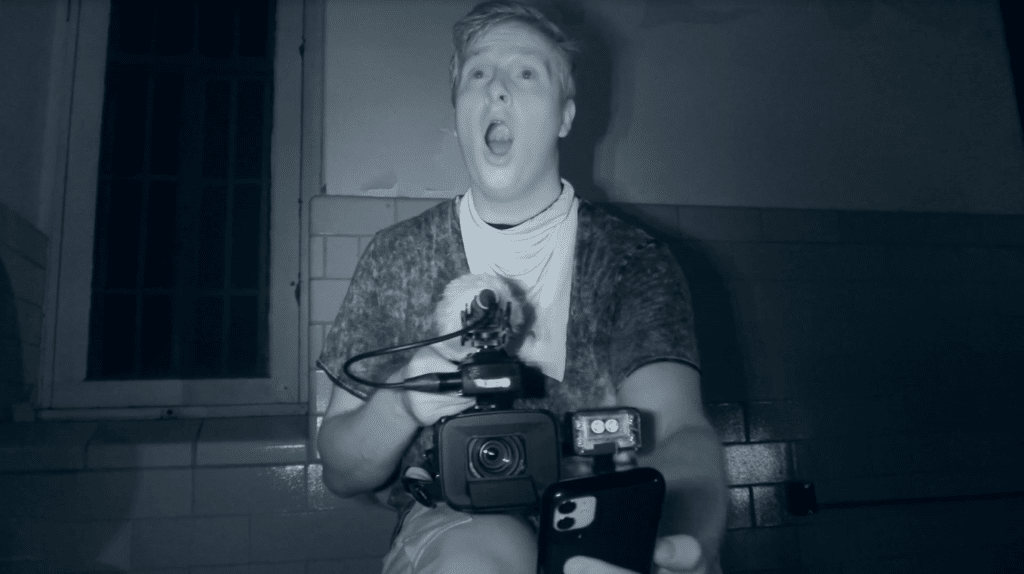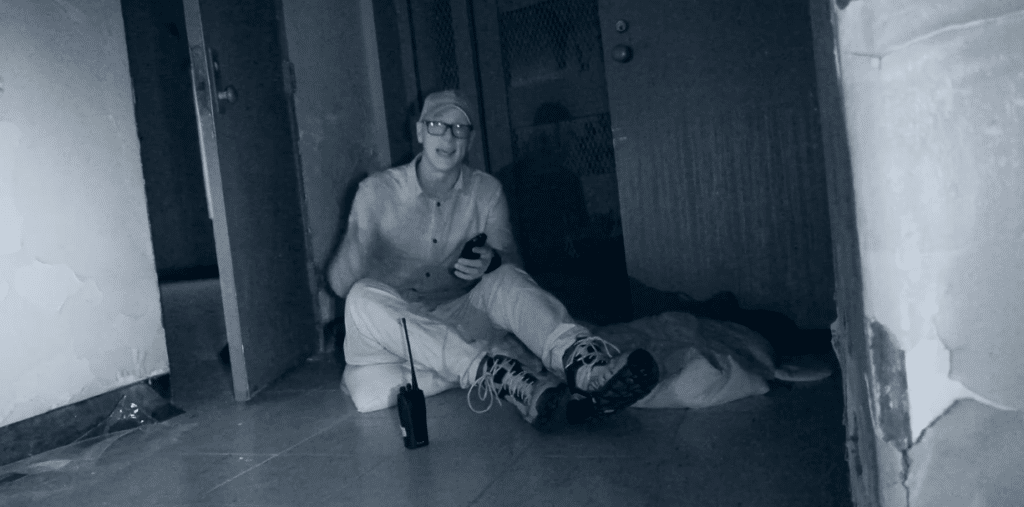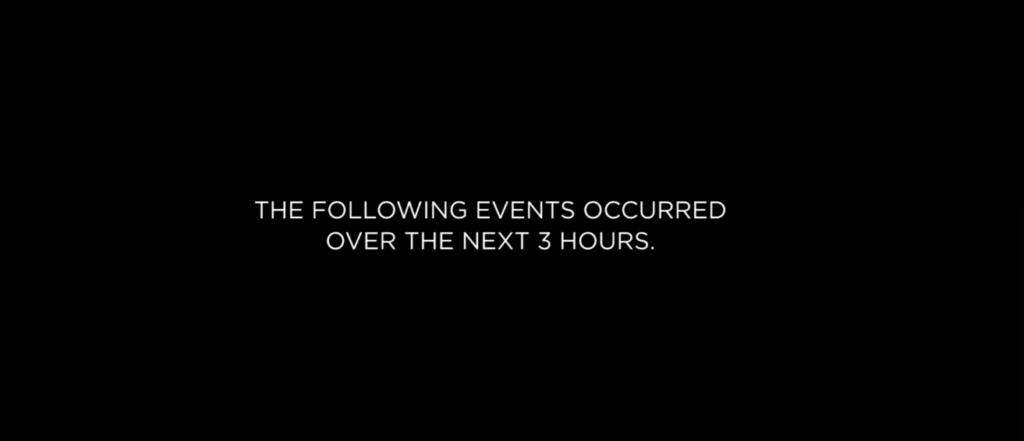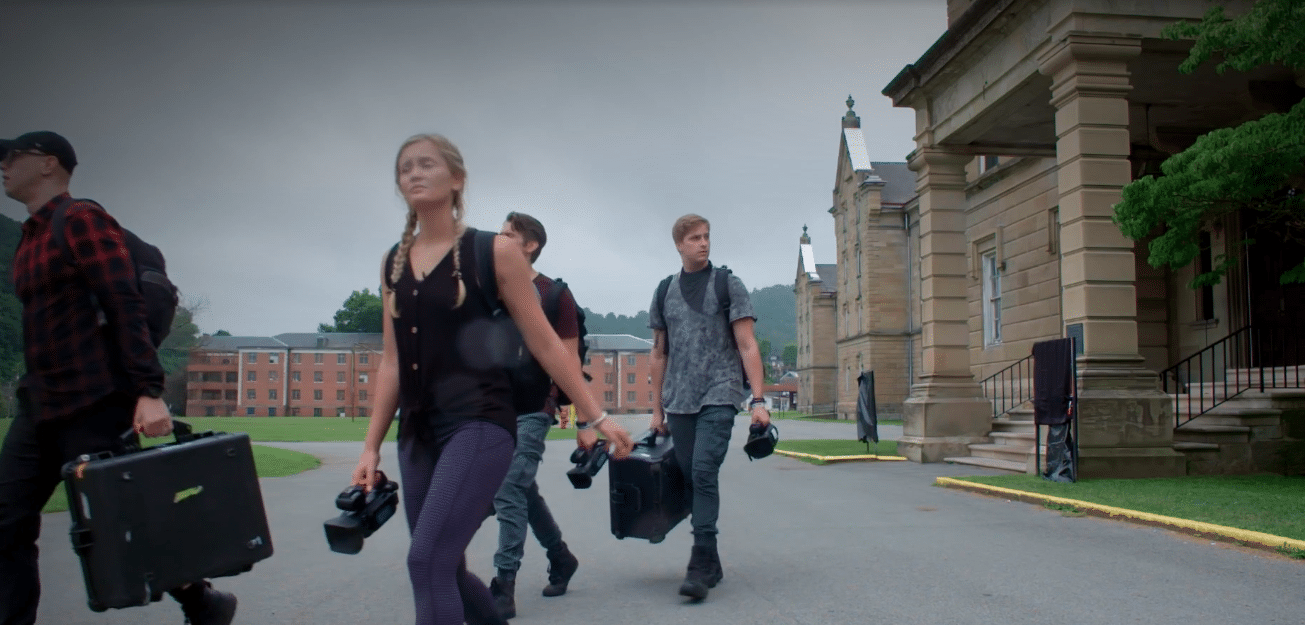
Destination Fear
Like any number of paranormal investigation shows, Destination Fear takes the viewer on a tour of some of the most haunted locations around the United States. The show follows Dakota Laden—who has appeared as a camera operator with the Ghost Adventures Crew—his sister Chelsea, their childhood friend Tanner Wiseman, and camera operator Alex Schroeder as they explore the paranormal. Like some other paranormal investigation shows, they also have a little twist:
“So I had an idea, a psychological experiment, where I would test how terror affects the human mind, what it reveals about our true selves and just how much of it a person can withstand. To understand the paranormal, first we need to overcome our fear.”—Dakota Laden
The impetus for this experiment comes from Dakota and Chelsea’s childhood where their family was “terrorized” by paranormal activity. Throughout the series, Dakota continues to come back to using this experience to help everyone overcome their fear.
The Formula
Destination Fear is formatted as a cross-country road trip in an RV. Each episode opens with the team on the road, discussing what they think they’re going to next, based on where they currently are in the country. After the opening they’ll arrive at tourist destination to have some fun while Dakota teases the location to the audience (though in the second season, each other team member is allowed to pick the location and host).
As they get closer to the location Dakota (or the hosting team member) will take the team to a fear-inducing tourist activity—which have ranged from zip-lining to going underground—in order to help prepare the rest of the team for the fear they’ll be encountering at the haunted location. This activity acts as the segue to revealing the location.
Just before they arrive at the location, it’s time for the reveal. Often taking place around a campfire (which feels like a throwback to my childhood watching Are You Afraid of the Dark) or in a spooky or creepy location near their destination, a packet is handed to the team members to open and officially reveal where they’re headed. The packet contains details about the locations including traumatic events, the number of deaths that have occurred there, and some of the paranormal claims and personal experiences of people who work at or have visited the location—often interspersed with recorded interviews of those experiences.
With the location revealed, the following day the team heads to the location and begins their investigation. Each investigation progresses differently, but will contain some combination of a group investigation, solo investigations, splitting up as teams, and sleeping alone. Once the sun rises the next day, the team packs up and records individual debriefs of their experiences.
The Investigation

There are two main parts to the investigation: the regular paranormal investigation and the solo sleeping assignments.
The regular investigation is what you would expect from a paranormal investigation show—the team travels from hotspot to hotspot with their equipment looking for signs of paranormal activity and attempting to communicate with spirits or entities. Sometimes, the team will take turns performing “solo” investigations on their own or they will split up into groups of two when the location is larger, but all of the elements are there.

The solo sleeping assignments are the unique element to their investigation style. This is where the “experiment” from the shows intro comes in—the team determines the most active sites at the location, then each person draws one of those sites from a hat to spend the rest of the night alone. The idea behind this being to record the fear that the team is fearing and, ostensibly, helping the team overcome this fear.

It’s during this part of the investigation where some of the more interesting or captivating events happen, from hearing unexplained noises and seeing shadows to hearing voices speak to them with their own ears. Every episode marks this segment with “The following events occurred over the next 3 hours”.



Once they sun begins to rise, the team packs up their gear and makes their way out of the location and back onto the RV that is waiting for them out front. Before leaving for the next location, though, the team each gives a sort debrief of their experiences. Often this is a discussion of how they’re feeling after the events of the previous night. Other times, they have more philosophical thoughts on the nature of their fear. Dakota will take this time to reflect not only on the events or his feelings from the investigation, but he will discuss how he believes his experiment is going, whether he feels like the team is conquering their fears or if they are getting worse or being reinforced.
Analysis
There’s one issue that jumps out from the very beginning of every episode of Destination Fear: Dakota’s “experiment”.
To start, he says that he’s performing an experiment about fear and “true selves”. To do this, he’s experimenting on friends and family—live subjects—hopefully with their consent. There is no hypothesis, no question he’s gathering data to answer. In fact, in that same statement he points out that he’s trying to get everyone to overcome their fear, which has little to do with understanding how fear affects people. He’s putting his friends and family in situations that instill fear in them and recording it.
To me, his “experiment” feels like a gimmick rather than something he’s intending to better understand or to do anything more with.
Over the course of two seasons, there isn’t a lot that stands out on the show. It provides a rather unique narrative for following a team as the investigate haunted locations and collect disembodied voices, doors moving on their own, and shadows lurking in the dark. The Destination Fear team is less methodical than on other shows, but that works in their favor—their goal is the fear and experiences that come with being in a haunted location and trying to contact the entities that reside within them. They aren’t looking to understand the nature of a haunting or help a property owner live with (or remove) the spirits.
What is enjoyable about this is that, as the audience, we know what to expect right from the beginning. There is no human interest story, no homeowner who is being haunted, or a person losing a business because of ghosts. There’s just the team, their equipment, and their experiences. The show is entertainment, pure and simple.
To this end, there are two episodes that make this apparent—in Season 2, Episode 3 the team visits the Montana State Prison. While they’re on their way to the location, they stop at a mineshaft museum. During a tour of one of the mine shafts, they’re sitting in the darkness they are startled by something moving toward them in the mine shaft. This sound turns out to be a cat that lives at the museum. Later on in Season 2, Episode 8 brings them to the Old Bourbon Distillery where they see something moving in the woods just outside the location. This also turns out to be a cat, which they chase down before they confirm this.
While we’re not getting state of the art paranormal investigation or attempts at creating a more scientific approach to researching the paranormal, we are getting a solid ghost hunting show in what might be the most pure form.
Destination Fear airs Saturdays on the Travel Channel. You can also watch episodes on watch.travelchannel.com and the Travel Channel app with your cable or satellite subscription or on Discovery+.